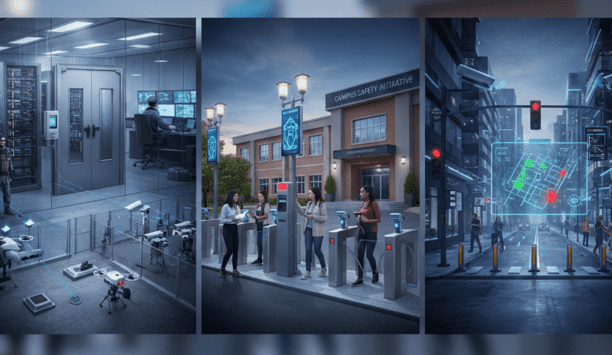 |
| The research from Australia shows “significant growth” in the use of CCTV by councils |
New research from Australia shows “significant growth” in the use of CCTV by councils and an increase in the size and sophistication of systems. The research, contained in a report by the Australian Institute of Criminology, was designed to measure the use of CCTV by local councils in Australia using an online national survey of local government, to gauge the extent and characteristics of open street surveillance systems across the country.
Even though the overall spending on CCTV systems has increased over the years, there is still a significant decline in the number of cameras that are actually being monitored. One of the main reasons cited for this decline is the lack of resources and additional funding required for the maintenance and operation of CCTV systems.
Australian CCTV study
A total of 221 councils out of 561 completed the survey, giving a response rate of 39%. Overall, some 57% of councils had a CCTV system in operation (compared to just 9% in a 2005 study) and 12% did not have a system but planned to install one in the future. So compared to the situation in 2005, there has been significant growth in the use of CCTV by local councils.
At least some of the growth can be attributed to various funding schemes from national, state and territory governments. One third (35%) of councils received funding in the financial year 2012-13, receiving an average of $85,090 (Australian dollars) each. More than half the councils (58%) had received funding in the five year period to 2012-2013 with an average of $198,214 each. Most of this funding was provided for capital infrastructure and installation costs, rather than for the running and maintenance of systems.
Information was also supplied on expenditure on CCTV by councils. Those that reported having CCTV expenditure in 2012-2013 spent on average $84,309.
Size of CCTV systems
The mean number of open street systems was 5.0 while the mean number of cameras operated by councils was 43.2. Some 53% of councils operated 20 or fewer cameras, while 27% had ten cameras or fewer. 12% of councils had more than 100 cameras in operation. The report concludes that a relatively small number of councils account for a “significant proportion” of all local government cameras.
The research also reveals that cameras have been installed in a wide range of locations. Among councils that had CCTV in operation, 56% had cameras installed on council-owned property, 48% in recreational areas, 28% in outdoor shopping malls and 27% in car parks.
"A number of councils expressed concern about the cost of monitoring CCTV and the need for additional funding to cover the operational costs associated with CCTV systems" |
The survey also looks at selected characteristics of the main system of each council, comparing it to results of the research carried out in 2005. There was an increase in the proportion of councils with more than 15 cameras from 31% to 43%; an increase in the use of digital technology (59% to 83%); a rise in the use of colour images (61% to 80%); and an increase in the use of wireless transmission (33% to 41%). The report cautions, however, that because these are the largest systems in operation, the main system may also be more likely to have been upgraded, so it’s unclear whether these results can be applied to systems more broadly.
Fall in camera monitoring
The efficacy of many of these systems is brought into question, however, as the majority of them are not monitored in real time. Some 61% of systems are not monitored, while a further 15% were occasionally monitored during business hours. Just 10% of systems were actively monitored either during business hours or 24 hours a day.
The growth in the use of CCTV has been accompanied by a fall in the proportion that are monitored, from around one in four at the time of the previous research to one in ten systems.
“This finding is not particularly surprising,” says the report, “given the resources that are required to monitor CCTV and the focus of major grant programs on covering installation and infrastructure costs. A number of councils expressed concern about the cost of monitoring CCTV and the need for additional funding to cover the operational costs associated with CCTV systems.”
CCTV footage use by local police
"A consistent theme throughout the survey was the need for local government and police to work more collaboratively in designing, managing and monitoring CCTV systems" |
Rather than focusing on monitoring in isolation, however, the report also mentions the extent to which police are willing and able to monitor CCTV, and says the benefit of monitoring CCTV will ultimately depend on its intended use. As well as needing resources to fund monitoring, it also requires an effective working relationship between CCTV operators and local police.
Four out of five councils (81%) had received at least one request during 2012-13 from police for footage, while 20% of councils received requests for footage from police around once a week on average. A further 19% had received such requests on a monthly basis.
Councils were also asked about the usage by police of such footage. More than two-thirds of councils (69%) reported that footage had been used to identify an offender “sometimes” or “often,” while 55% said that footage had been used to prosecute an offender “sometimes” or “often.”
The report continues: “A consistent theme throughout the survey… was the need for local government and police to work more collaboratively in designing, managing and monitoring CCTV systems.” The report concludes that more research is needed to better understand the impact of CCTV footage on criminal investigations and the capacity of police to identify and apprehend offenders.












































